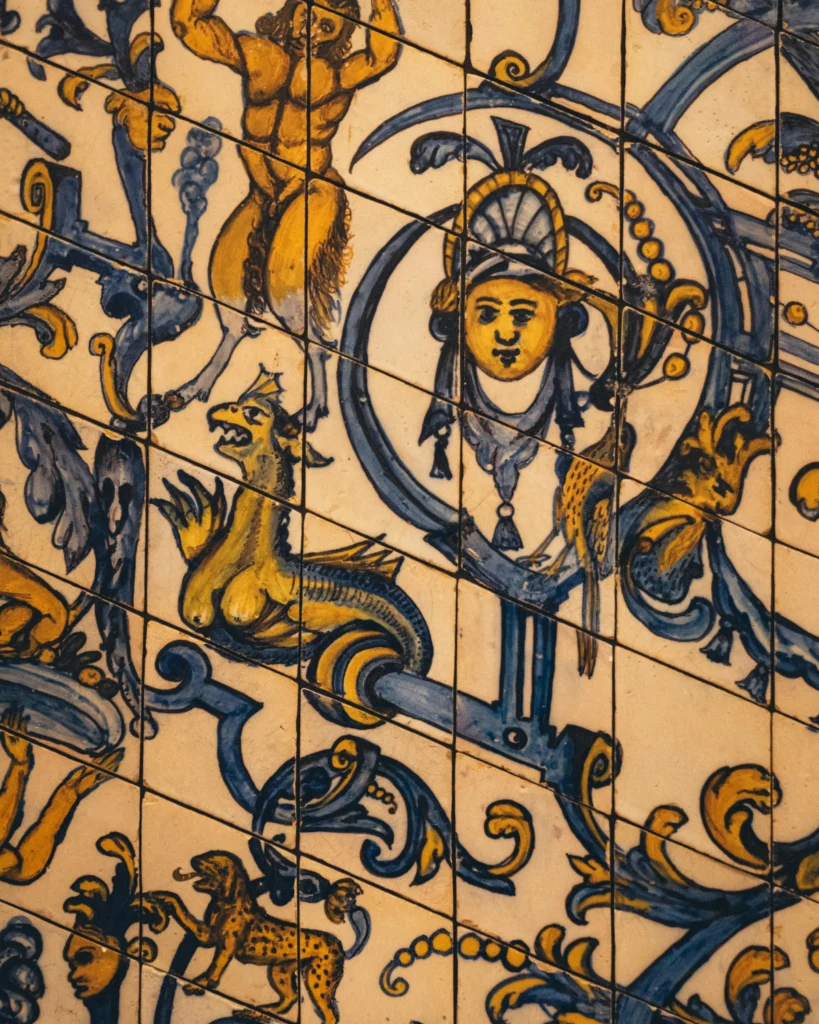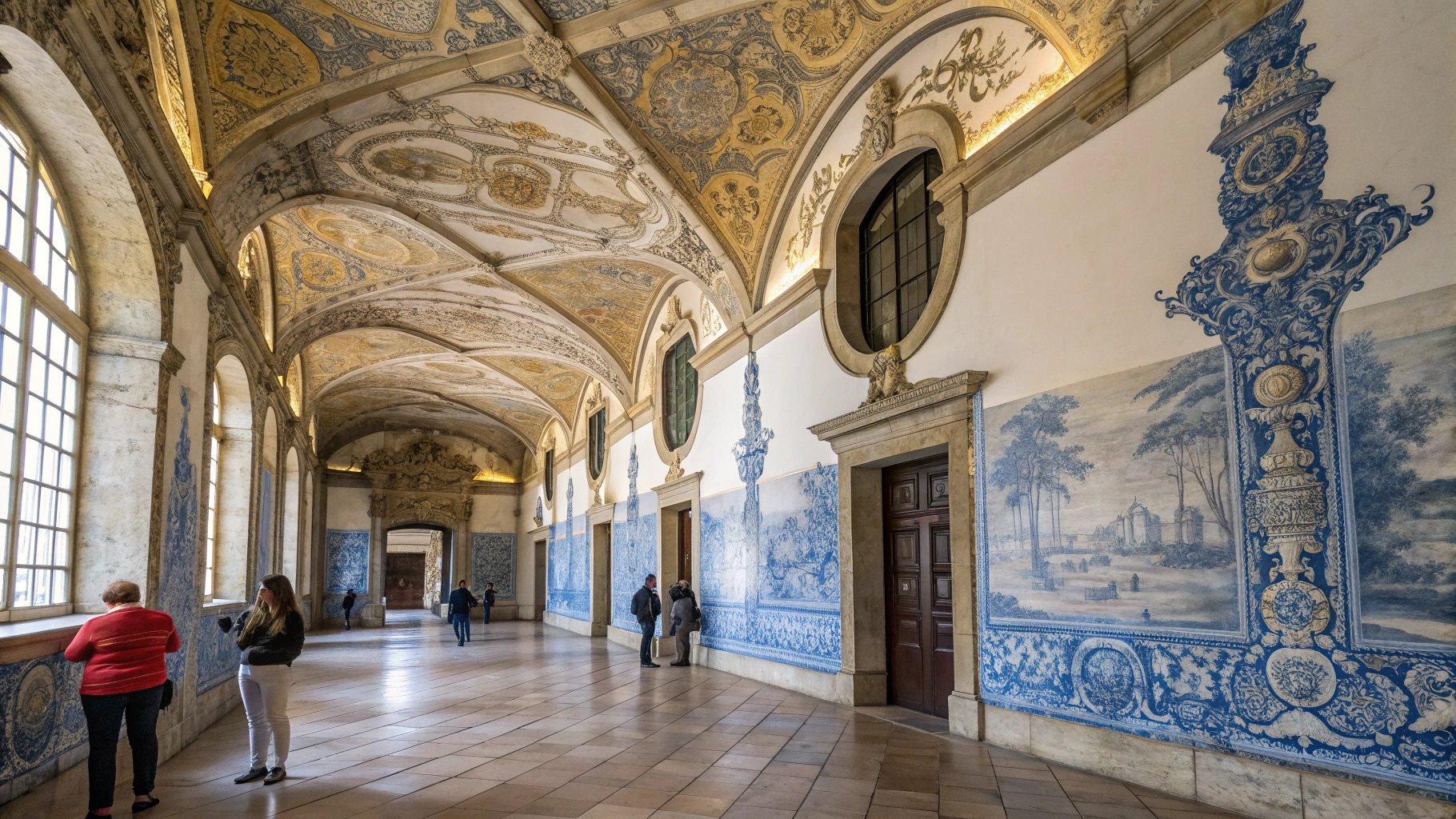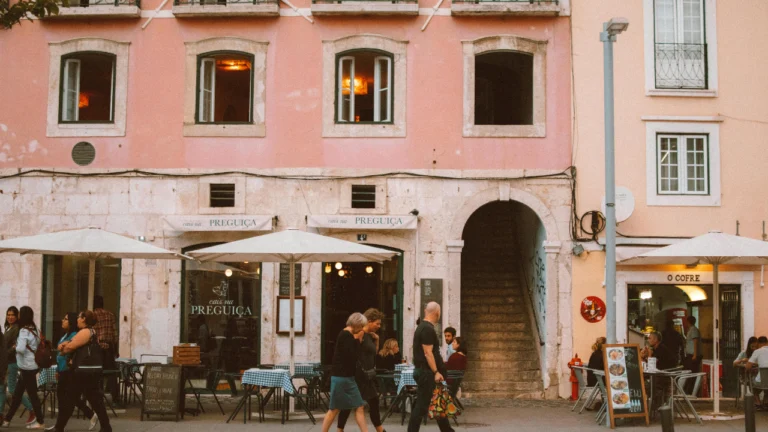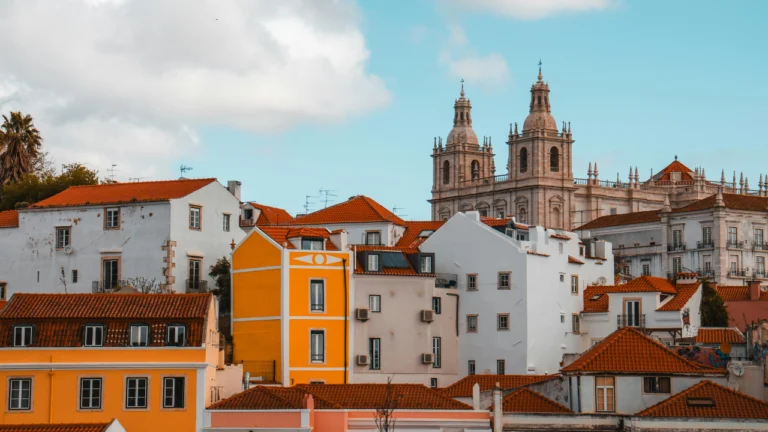National Tile Museum Lisbon A Family Guide
Last updated on August 25, 2025 at 15:29:53
Right, I need to tell you about the National Tile Museum in Lisbon, but first you need to understand the morning that led us there. It was one of those February days where the rain comes sideways and even the pigeons look miserable. Theo, my five-year-old, had been crying for twenty minutes about his wet socks proper theatrical sobbing that would make Shakespeare proud. Lena was slouched on the sofa doing her best teenager impression (she’s only eight, mind you), moaning that there was “literally nothing to do in this stupid city.”
That’s when Senhora Rosa knocked on our door. She lives downstairs and has this uncanny ability to appear whenever chaos peaks in our flat. “Menino Theo está bem?” she asked, pretending not to notice the sock he’d just hurled past my head. Then she said something that changed everything: “Já foram ao Museu do Azulejo? É perfeito para crianças.”
The Tile Museum? Perfect for children? I was sceptical. I mean, I love tiles properly love them, sketch them constantly, bore my wife rigid talking about them but my kids? Theo thinks museums are places where fun goes to die.
🌿 Hidden Garden
A secret oasis inside the National Tile Museum. Perfect for quiet breaks — and spotting Tile Cat.
➡️ Get DirectionsGetting There (Without Losing Your Mind)
The museum’s in Beato, which sounds far but isn’t really. We caught the 728 tram from Martim Moniz because the kids love trams and I needed to buy myself some peace. Theo counted boats on the Tagus while Lena played some game on my phone where you dress up virtual cats. Twenty minutes later, we were standing outside this massive convent — Convento da Madre de Deus looking nothing like what I’d expected.
Entry’s five euros for adults, kids free, which is honestly brilliant. The woman at reception took one look at Theo’s still-damp eyes and handed him a sticker before I’d even paid. Sometimes the Portuguese just get it, you know?

When Everything Changed at the National Tile Museum Lisbon
We walked into the church part first, and bloody hell. Sorry, but there’s no other way to describe it. The ceiling is absolutely dripping with gold, proper baroque madness, and every single wall is covered in blue and white tiles telling Bible stories. Theo went completely silent. Lena actually put my phone away without being asked. I just stood there with my mouth open like some tourist who’d never seen art before.
But here’s the mad thing it wasn’t the obvious grandeur that got us. It was this one tile, cracked down the middle, showing a boat. Theo walked straight up to it and goes, “Dad, is that boat lost?” And suddenly we weren’t looking at museum pieces anymore. We were looking at stories.
The museum flows chronologically, which sounds boring but isn’t. You start with these mental geometric patterns from the Moors all interlocking stars and diamonds that made Theo dizzy trying to follow them with his finger. Lena surprised me by recognizing the math in them (her teacher would be so proud). Then you move through the centuries, watching the tiles evolve from geometric to storytelling, from religious to secular, from formal to almost playful.
The Wall at the National Tile Museum Lisbon
There’s this massive panel showing Lisbon before the 1755 earthquake. It’s like Google Earth from the 1700s, but in tiles. We genuinely spent an hour in front of it. Theo found three dogs, twelve horses, and what he insisted was a dragon but was definitely just a weird-looking cloud. Lena started making up stories about the tiny people — that one was late for church, this one was buying fish, those two were having an argument about a chicken (don’t ask, eight-year-old logic).
An older Portuguese couple were watching us, and the woman came over. In perfect English she said, “Your children see the tiles properly. Most adults just take photos and leave.” Then she showed Theo a tiny figure of a boy with a kite that we’d completely missed. He was so chuffed he made me take about fifteen photos of it.

The Kitchen That Shouldn’t Work But Does
The old convent kitchen is completely covered in tiles showing food, cooking scenes, dead animals hanging up — it’s like Instagram for the 1700s. Sounds grim, but it’s actually brilliant. Lena started this game where she had to make a meal using only things shown in the tiles. She ended up with rabbit stew, fish soup, and about seventeen types of cake (one of which Theo insisted contained chocolate, bless him chocolate wasn’t even properly in Portugal then).
There’s also this bit where they show you how tiles are made. Theo watched the video of the modern tile makers three times. THREE TIMES. This is a child who can’t sit through five minutes of Peppa Pig. But watching someone paint cobalt onto white clay? Apparently that’s riveting. He kept asking if we could make tiles at home. (We can’t. I checked. Our landlord would murder us.)
What Nobody Tells You
There’s a garden. A proper secret garden that nobody seems to know about. Ask at reception or just follow the signs everyone ignores. We ate our sandwiches there (cheese and ham, nothing fancy) and Theo found a cat who he immediately named Tile Cat. Creative, that one.
The museum shop is actually decent. Not just overpriced tat but proper reproductions of historical patterns. I bought a tile with a pineapple on it because pineapples on Portuguese tiles are hilarious they’d never seen one in real life so they look like mutant pinecones. It’s now in our bathroom in Brighton and makes me smile every morning.
The Bit That Hit Me
Walking back through Alfama that afternoon, everything looked different. The tiles I walk past every day, the ones I’d stopped noticing, suddenly had stories. That broken blue one on Rua dos Remédios? Someone made that. Someone painted that bird in the corner. Someone decided that particular shade of blue was perfect.
Lena noticed too. She stopped at our building’s entrance and properly looked at our tiles for the first time. “Dad, ours are like the ones from the 1920s section!” She was right. Same style, same colours, probably the same workshop. Our building, our home, is part of this massive story that goes back 500 years.
Theo’s been drawing tiles ever since. Wonky, wonderful tiles with dragons and chocolate cakes and cats named Tile Cat. Last week he gave one to Senhora Rosa. She kissed his head and stuck it on her fridge. “É um verdadeiro artista,” she said. A true artist.
Look, I know it’s just a museum about tiles. But it’s also not. It’s about looking properly, about finding stories in things you walk past every day, about understanding that someone cared enough to make something beautiful even if it was just going to cover a wall in a kitchen. The National Tile Museum gave my family a new way to see Lisbon. Even Theo’s learned to love rainy Tuesdays now that’s when we go back.
Have you been? What did you think? And seriously, if you spot Tile Cat in the garden, send me a photo. Theo’s convinced he lives there permanently now.
FAQs About National tile museum lisbon
Is the Tile Museum in Lisbon worth it?
Absolutely worth the five euros. It completely changed how our family sees Lisbon now we spot tile patterns everywhere and understand the stories they tell. Even my five-year-old loves it.
Where is Tile Museum Lisbon?
It’s in Beato, east of the center. Take the 728 tram from Praça do Comércio (20 minutes along the river) or buses 718/742. Address: Rua da Madre de Deus 4.
How much does it cost to go to the National Tile Museum in Lisbon?
Five euros for adults, free for children under twelve. Free first Sunday of each month but it gets packed. Honestly a bargain for what you get.








The Portuguese azulejos are fascinating, with Moorish geometry and evolving European styles coming together to tell stories in ceramic form. I’ll definitely add the Tile Museum to my Lisbon list now, especially for that secret garden and the storytelling tiles.